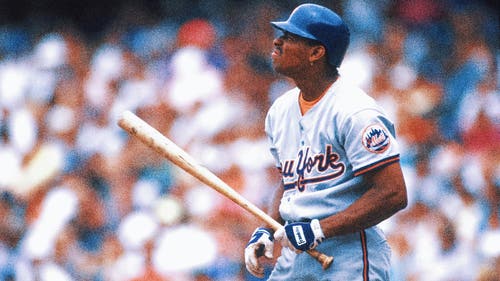
2013 Hall ballot will challenge voters
The Ballot — the one bearing the names of Barry Bonds and Roger Clemens as Hall of Fame candidates — was unveiled Wednesday. Finally. This is the referendum we’ve waited for, the vote that some have said will provide judgment of the sport’s steroid era.
Let me save you the trouble: It won’t.
For one thing, there is fresh evidence that baseball’s struggle with performance-enhancing drugs is far from over: Carlos Ruiz, the respected Philadelphia Phillies catcher, was hit with a 25-game suspension Tuesday after testing positive for an amphetamine. The Steroid Era is a moving, amorphous target, more slippery than an All-America kick returner in a monsoon.
But the ballots are out just the same, and members of the Baseball Writers’ Association of America will mark them according to their conscience over the coming days. In the absence of Nate Silver certified projections, we are left to use past voting results as a guide.
Like Bonds and Clemens, Mark McGwire was linked to steroid use. Unlike Bonds and Clemens, he admitted to it. McGwire has received 19.8 and 19.5 percent of the vote, respectively, in the two ballots issued since he admitted his PED use in January 2010. Bonds and Clemens had better careers than McGwire, and I suppose some voters may truly believe they did so without steroids — against overwhelming (but not legally convincing!) evidence to the contrary.
So, we can expect Bonds and Clemens will receive more than the 5 percent necessary to remain on the next ballot but less than the 75 percent needed for election.
Not a condemnation. Not a validation. Something in between.
To the extent that the Hall of Fame is history’s verdict of a baseball player, the 2013 adjudication will be, “Hmm . . . we’ll get back to you next year.”
In all likelihood, a similar fate awaits fellow first-timer Sammy Sosa, whose career profile and steroid taint puts him on comparable footing to McGwire: great home-run hitter during a chemically enhanced epoch but without the varied array of accomplishments held by Bonds and Clemens.
I don’t know who used steroids and who didn’t. Neither do you. Neither does Sen. George Mitchell, for that matter, and he spent nearly two years investigating the subject. Conflicted voters would do themselves a great favor by coming to grips with their intrinsic ignorance of what occurred.
I’m not a Hall of Fame voter. (I haven’t been in the BBWAA long enough.) But I have said before — and still believe — that Bonds and Clemens belong in Cooperstown, largely because of the Hall’s obligation to provide an account of the game’s history.
The Steroid Era is a complicated — and ongoing — chapter in the story of our national pastime. To ignore it is absurd. To admit only the players regarded as “good guys” or those who lack the bulked-up physique of the most obvious juicers, is similarly flawed. It requires profound hubris or naivete to believe we know how men behaved out of sight when undetected cheating meant millions of dollars.
Those who played major league baseball during the heyday of PED use either benefited from steroids themselves or did not push their union hard enough to institute the sort of testing that has cleaned up (if not sterilized) the sport. If Bonds and Clemens are elected, their plaques should include mention of the court proceedings — and apparent legal exonerations — associated with their link to PEDs. Each visitor to Cooperstown will have the right to form their own opinions. This is, after all, the National Baseball Hall of Fame and Museum.
But I don’t expect that resolution in the near future — if at all. All we know is that the BBWAA has begun its deliberation, with the results announced Jan. 9.
Jack Morris, Jeff Bagwell and Lee Smith are back on the ballot and have a chance at election, along with newcomers Craig Biggio, Mike Piazza and Curt Schilling. Sadly, the story of this year’s vote will be the two players who don’t make it — and by how much.










